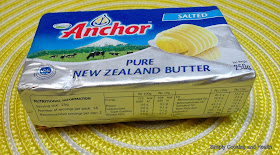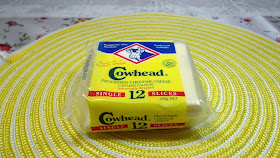 |
| Butter |
Linoleic and linolenic acid are essential fatty acids. These fatty acids are good for controlling inflammation, blood clotting. They promote brain development.
 |
| Olive oil |
Fat is also the storage medium for the extra calories. Fat fills the fat cells that protects the body from shocks. After about 20 minutes of exercise the body would have used up all the calories from the carbohydrates. Thereafter it uses the calories from fats in the body. Fat helps in maintaining healthy skin and hair. It also helps the body absorb the vitamins A, D, E, and K.
The nature of the fat is determined by the amount of saturated and unsaturated fatty acids that make up the triglycerides. All fats contain both saturated and unsaturated fatty acids. They are called saturated or unsaturated based on the fatty acids content.
Saturated fats are generally animal fats. They remain solid at room temperature. When looking at food label watch for the saturated fat content to avoid or limit the consumption of it. Saturated fat should be less than 10% of the total calories consumed.
Saturated fats are found in mostly animal products such as butter, whole milk, cheese, ice cream, and fatty meats. Some vegetable oils such as coconut oil, palm, and palm kernel oils contain saturated fats.
Unsaturated fats are generally vegetable fats which remain liquid form at room temperature. Some vegetable oils such as palm oil contain a high percentage of saturated fatty acids. Unsaturated fats help in lowering blood cholesterol. However, these fats produce high calories, so you will have to limit their consumption.
 |
| Coconut milk powder |
Unsaturated fats can be further sub divided into monounsaturated and polyunsaturated fats, Monounsaturated and polyunsaturated fats are good fats and they lower disease risk.
Olive and canola oils contain monounsaturated fats, while polyunsaturated fat is found in fish oil, oils from vegetables like soybeans, safflower, sunflower and corn. Polyunsaturated fats help in lowering triglycerides and fighting inflammation. Monounsaturated fats lower bad (LDL) cholesterol levels, while increasing good cholesterol (HDL).
Trans fatty acids are formed when the oil is hydrogenated to make it harder to look like butter and ghee. These fats raise the LDL (bad cholesterol) level and lower the HDL (good cholesterol) level. Partially hydrogenated oils are hardened only partially. Most margarine is partially hydrogenated. Food made with hydrogenated fat contains high levels of trans fatty acids. Trans fatty acids are linked to heart disease.HDL cholesterol in high levels will give protection against heart disease and stroke, while high levels of LDL cholesterol can clog arteries, increasing your risk. Trans fatty acids are usually found in margarines and in fried foods and baked foods such as donuts, cookies, crackers. They are also found in many processed foods as they are made with hydrogenated fats.
 |
| Cheese |
Consumption of polyunsaturated fats in large quantities may increase the risk of some types of cancer. Moderation in consumption of fat may help in reducing the cancer risk factors.
However, cholesterol and fat are considered to be important for brain development and therefore children under the age of 2 should not be on restricted diet.
Omega 3 and 6 fats are essential to the body and should be consumed daily. Sources of Omega-3 fats are fish, walnuts, ground flax seeds, chia seeds flaxseed oil, canola oil, and soybean oil. Omega-3 are highly concentrated in the brain. They play an important role in cognitive function such as memory, problem-solving abilities. They also help reduce depression and maintain emotional stability.
There are several types of omega-3 fatty acids. Eicosapentaenoic acid (EPA) and docosahexaenoic acid (DHA) have the most research to back up their health benefits. Both are found in plenty in fish such as salmon. herring, mackerel, anchovies, or sardines, and cod. Alpha-linolenic acid (ALA) comes from plants. Studies suggest that it’s a less potent form of omega-3 than EPA and DHA. The best sources include flaxseed, walnuts, and canola oil.
Some people avoid fish because of mercury and other toxins found in the fish. However two servings of fish rich in omega-3 per week outweigh the risks. Fish oil is also available in the form of supplement and can be taken without the fear of toxins. The label on the bottle might say 1000 mg of fish oil. See how much omega-3 fatty acid it contains. It may be 300 mg of EPA and DHA. The higher this number better it is for you. You should aim at 1000 mg of EPA and DHA daily. For those who have some adverse reaction such as stomach upset and belching, it may be good to take the supplement along with the food or divide the dosage among three meals. Starting with a very small dose and increasing the dosage slowly will also help those who have adverse reaction to fish oil.
There should be a balance in taking omega 3 and 6. Omega 6 is pro-inflammatory and omega 3 is anti- inflammatory. It is also known as linoleic acid Take less omega 6. Reduce your intake of taking products high in omega 6. Omega 6 is found in Vegetable oils. Safflower oil, grape seed oil, sunflower oil, corn oil, soy oil, sesame seed oil, evening primrose oil.
Visit this link for an over view of Nutrition.
No comments:
Post a Comment